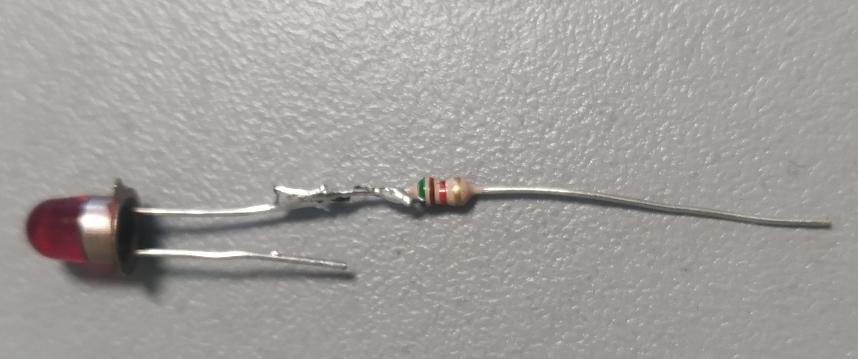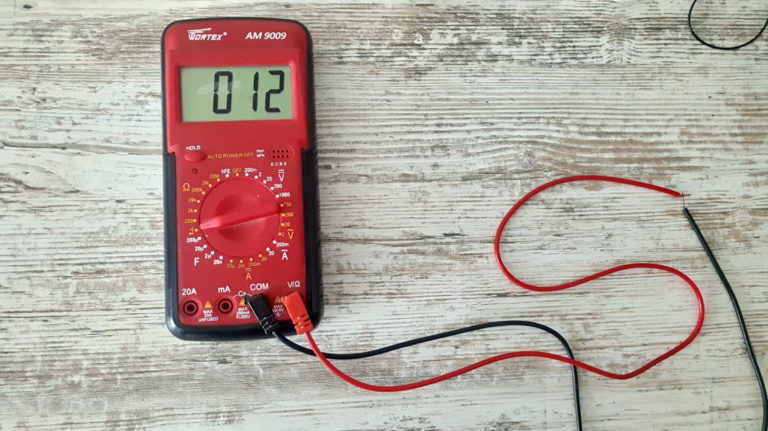LED Voltage Details - How to Know the Operating Current
Often in the hands of a repairman or radio amateur fall LEDs without the application of technical documentation. For the correct use of semiconductor devices it is necessary to know their characteristics, otherwise the rapid failure of the light-emitting element is inevitable. Although the controlling parameter for LED is current, knowing the operating voltage is important - if it is exceeded, the life of the p-n junction will not last long.
How to know which LED is in the lamp
The easiest way is if the lamp is fully operational. In this case you just need to measure the voltage drop across any of the elements. If one or more elements do not shine (or all of them) when the power is on, you need to go another way.
If the lamp is built with a driver circuit, the driver has the output voltage listed as the upper and lower limits. This is because the driver stabilizes the current. To do this, it needs to change the voltage within certain limits. The actual voltage will have to be measured with a multimeter and make sure that it is normal. Then visually (on the PCB tracks) determine the number of parallel chains of LEDs in the matrix and the number of elements in the chain. Voltage of the driver should be divided by the number of elements connected in series. If the voltage on the driver is not marked, you can only measure it by fact.


If the luminaire is built according to the scheme with a ballast resistor and its resistance is known (or it is possible to measure it), then the LED voltage can be determined by calculation. For this you need to know the operating current. In this case it is necessary to calculate:
- voltage drop on the resistor - Uresistor=Irab*Rresistor;
- voltage drop on the LED chain - Uled=Upply - Uresistor;
- divide Uled by the number of devices in the chain.
If Irab is unknown, it can be taken as 20-25 mA (resistor circuit is used for low-power lanterns). The accuracy will be acceptable for practical purposes.
How many volts is the forward voltage of the LED

If you study a standard volt-ampere characteristic of an LED, you will notice several characteristic points on it:
- At point 1, the p-n junction begins to open. A current begins to flow through it and the LED begins to glow.
- With increasing voltage the current reaches the operating value (in this case 20 mA) and at point 2 the voltage is working for this LED, the brightness of the glow becomes optimal.
- As the voltage increases further, the current grows and reaches its maximum allowable value at point 3. After that it quickly fails, and the CVC curve grows only theoretically (dashed section).
It should be noted that after the end of the inflection and reaching the linear section, the CVC is steeper, which leads to two consequences:
- When the current increases (for example, if the driver fails or there is no ballast resistor) the voltage grows weakly, so we can talk about a constant voltage drop at the p-n junction, regardless of the operating current (stabilization effect);
- with a small increase in voltage, the current grows quickly.
Therefore, it is not possible to noticeably increase the voltage at the element relative to the operating voltage.
How many volts LEDs are available
Parameters of LEDs depend mostly on the material of which the p-n junction is made, although some of the characteristics still depend on the design. Typical values of operating voltage and glow color for low-power elements at 20 mA are summarized in the table:
| Material | Glow color | Direct voltage range, V |
|---|---|---|
| GaAs, GaAlAs | Infrared | 1,1 – 1,6 |
| GaAsP, GaP, AlInGaP | Red | 1,5 – 2,6 |
| GaAsP, GaP, AlInGaP | Orange | 1,7 – 2,8 |
| GaAsP, GaP, AlInGaP | Yellow | 1,7 – 2,5 |
| GaP, InGaN | Green | 1,7 – 4 |
| ZnSe, InGaN | Blue | 3,2 – 4,5 |
| Phosphor | White | 2,7 – 4,3 |
High-power lighting LEDs operate at high currents. For example, a crystal of the popular LED 5730 is designed for long-term operation at a current of 150 mA. But because of the steep E-V curve that stabilizes the voltage drop, its Urab is about 3.2 V, which fits into the value shown in the table.
How to find the voltage
The most obvious method of determining the voltage of a semiconductor device is to use an adjustable power supply. If the power supply is regulated from zero and current control (or better yet, current limitation) is possible, then nothing else is needed.
You have to connect the LED to the source, strictly observing polarity. Then you should smoothly raise the voltage (up to 3...3.5 V). At a certain voltage the LED will flash at full power. This level will roughly correspond to the operating current, which can be read from the ammeter. If the instrument does not have a built-in ammeter, it is highly desirable to monitor the current with an external meter.

This method is applicable to optical range devices. The glow of UV and IR LEDs is not visible to the human eye, but in the latter case you can watch the LED turn on through a smartphone camera. In this way you can track the appearance of infrared radiation.

Important! Do not exceed the limit of 3...3.5 V when raising the voltage! If the LED does not light up under these conditions, the polarity of the device may be wrong. It may fail due to exceeding the reverse voltage limit.
If there is no regulated source, you can take an ordinary power supply with a fixed output, known to be higher than the expected voltage of the LED. Or even a 9-volt battery, but in this case you can only test a small power LED. A resistor should be soldered in series to the light-emitting element so that the current in the circuit does not exceed the upper limit. If it is assumed that the LED is low-power and works with a current of no more than 20 mA, then for a source with an output voltage of 12 V the resistor should be about 500 ohms. If a high-power lighting device (e.g. 5730 size) with a current of 150 mA is used (a battery will not always provide this current), then the resistor should be about 10 ohms. It is necessary to connect the circuit to a DC voltage source, make sure that the LED lights up and measure the voltage drop across it.

There are also alternative ways to find out how many Volts the LED is rated for..
With a multimeter

In some multimeters, the voltage applied to the terminals in diode testing mode is high enough to ignite the LED. Such a meter can be used to determine the operating voltage of the LED, while checking the pinout of the semiconductor element. If connected correctly, the p-n junction will start to glow, and the tester will show some resistance (depends on the type of LED). The problem with this method is that you will need a second multimeter to measure the actual U-value at the pins of the LED. And another point: the measuring voltage of the multimeter is unlikely to be sufficient to bring the LED to the current operating point. Visually it is noticeable by not bright enough glow, and for measurements it will mean that the LED did not reach the linear part of the CVC and the actual value of the operating voltage will be higher.
By appearance

Operating voltage can be roughly estimated by the appearance and color of the LEDs (sometimes the color can be determined even without powering the device). To do this you can use the table above. But you can not uniquely determine the voltage by the color of the LED glow. Often manufacturers tint the compound so that the emission color of p-n junction formed with the color of the lens and got a new shade. In addition, even within a single color there is a scatter of parameters (see table) for different types of LEDs. For example, for a white LED the difference in voltage can be more than 50%.
How to know what is the current capacity of the LED
All of the above applies to conventional LEDs, operating without additional built-in elements. Existing technology allows you to build additional components into the body of the device. For example, quenching resistors. So you get LEDs for higher voltage - 5, 12 or 220 V. Visually determine the ignition voltage of such devices is almost impossible. Therefore, there is one way left.
If the previous methods failed and you are sure that the LED is faulty, you should try to apply a higher voltage to it. First 5 V, then increase the voltage to 12 V, if there is no result - you can try to increase further, up to 220 В. But it is better not to experiment up to this voltage, as it is dangerous for human health. In addition, in case of an error you can destroy the body of the LED. This can cause a small explosion, melted wire insulation, fire, etc. Nowadays, technology has stepped forward and LEDs are not expensive enough to risk your equipment and health for it.
Let's consolidate our knowledge with the help of a video.

